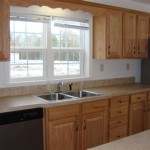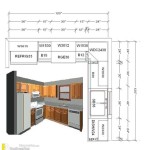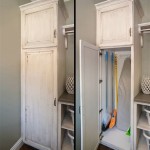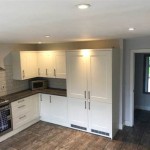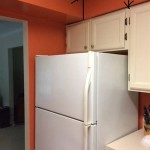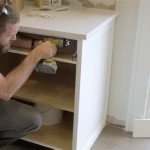How to Build New Kitchen Cabinet Doors
Kitchen cabinet doors are a crucial element in defining the aesthetics and functionality of a kitchen. Replacing old, damaged, or outdated doors can significantly enhance the look and feel of the space. While purchasing new doors is an option, building your own presents a rewarding DIY project that allows for complete customization. Building custom cabinet doors not only saves costs but also offers a unique opportunity to express personal style and preferences.
This article provides a comprehensive guide on how to build new kitchen cabinet doors, breaking down the process into manageable steps. It covers all stages, from choosing the right materials to finishing and installing the doors, ensuring a successful and satisfying project.
Gathering the Necessary Materials and Tools
Before embarking on the building process, it is crucial to gather all the necessary materials and tools. This ensures a smooth and efficient workflow. The materials required include:
- Wood: Choose a suitable type of wood for your cabinet doors, considering factors like durability, appearance, and budget. Common choices include plywood, MDF, and hardwood such as oak, maple, or cherry.
- Cabinet door hinges: Select hinges compatible with your existing cabinet frame or the ones you are building. Consider the size and style of the hinges to complement the door design.
- Drawer slides (if applicable): If you are building cabinet doors for drawers, select appropriate drawer slides for smooth operation.
- Wood glue: Opt for a high-quality wood glue designed for cabinet construction.
- Wood screws: Choose screws of appropriate length and size for securing the door components.
- Finishing materials: These include primer, paint, stain, or other finishes to achieve your desired look for the doors.
In addition to materials, the following tools are essential for building the cabinet doors:
- Table saw or circular saw: Used for accurate cutting of the wood pieces.
- Miter saw: Provides precise angled cuts for creating frames and molding.
- Drill: Required for drilling pilot holes for screws and hinges.
- Router: Optional for creating decorative edges and profiles.
- Clamps: Used to secure pieces while gluing and assembling.
- Sandpaper: Essential for smoothing surfaces and achieving a consistent finish.
- Measuring tape and pencil: Crucial for accurate measurements and marking.
Creating the Cabinet Door Frames
Building the frame forms the foundation of the cabinet doors. The frame provides structural support and defines the overall shape and size. Follow these steps to create the frames:
- Measure existing doors: Accurately measure the width, height, and thickness of the existing doors to replicate their dimensions. Alternatively, measure the space where the doors will be installed for new cabinets.
- Cut the frame pieces: Use a table saw or circular saw to cut the wood pieces for the frame according to the measured dimensions. Allow for the thickness of the panels that will fit inside the frame.
- Join the frame pieces: Use wood glue and screws to join the frame pieces, ensuring that the corners are square and the frame is strong and stable.
- Reinforce the frame: Consider adding additional support using corner blocks or wood dowels for extra stability, especially for larger doors.
Building the Cabinet Door Panels
The panels are the flat surfaces that fit inside the frames. They are typically made of plywood, MDF, or solid wood. Follow these steps to create the panels:
- Measure the panel openings: After assembling the frame, accurately measure the width and height of the panel openings. Subtract a small amount for a tight fit, typically around 1/8 inch.
- Cut the panel material: Utilize a table saw or circular saw to cut the panel material to the measured dimensions. Ensure the panel edges are straight and smooth.
- Sand the panel surfaces: Smooth any rough edges or imperfections on the panel surfaces using sandpaper for a consistent finish.
Installing the Panels into the Frames
After building the frame and panels, the next step is to install the panels securely within the frame. Follow these steps:
- Attach the panels to the frame: Using wood glue and screws, attach the panels to the inside of the frame, ensuring they are flush and centered.
- Apply pressure: Use clamps to apply even pressure to the panels while the glue dries, ensuring a secure bond.
- Remove clamps: Once the glue has dried, remove the clamps and inspect the connection for stability.
Installing Hinges and Drawer Slides
Installing hinges is a crucial step in the cabinet door building process, allowing the doors to swing open and close smoothly. For drawers, drawer slides are installed to facilitate smooth sliding motion.
- Mark hinge positions: Accurately mark the hinge positions on the cabinet door and the cabinet frame. Ensure the hinges are aligned for proper door function.
- Attach hinges: Drill pilot holes for the hinge screws and then secure the hinges to the door and frame using screws.
- Install drawer slides: If building doors for drawers, install the drawer slides according to the manufacturer's instructions. Ensure the slides are securely mounted for smooth operation.
Finishing the Cabinet Doors
The final step in building custom cabinet doors is finishing them. Finishing involves applying a primer, paint, stain, or other coatings to achieve the desired look and protect the wood surfaces. Follow these steps:
- Prepare the surfaces: Sand the entire door surface with progressively finer sandpaper to smooth any imperfections and create a smooth finish for paint or stain.
- Apply primer: Apply a primer to the doors for a better adhesion of paint or stain, reducing the chances of uneven color application.
- Paint or stain: Apply paint or stain according to the specific product instructions. Multiple coats may be necessary for an even and durable finish.
- Seal (if necessary): Apply a sealant to the finished doors to protect the paint or stain and enhance durability.
Building new kitchen cabinet doors is a rewarding DIY project that allows for customization and personal style expression. The process involves careful selection of materials, accurate measurements, and precision cutting. By following these guidelines, you can create beautiful and functional cabinet doors that enhance the aesthetics and functionality of your kitchen.

How To Make Diy Cabinet Doors Without Fancy Router Bits

How To Make Diy Cabinet Doors Without Fancy Router Bits

All About Replacing Cabinet Doors New

Kitchen Diy Shaker Style Cabinets Cherished Bliss

How To Make Your Own Cabinet Doors Beneath My Heart

Diy Rustic Industrial Cabinet Doors Tutorial Cherished Bliss

Diy Shaker Cabinet Doors The Easy Way Mimzy Company

How To Add Glass Cabinet Doors Confessions Of A Serial Do It Yourselfer

5 Tips For Installing Diy Cabinet Doors Now

How To Build Cabinets The Complete Guide Houseful Of Handmade
Related Posts

